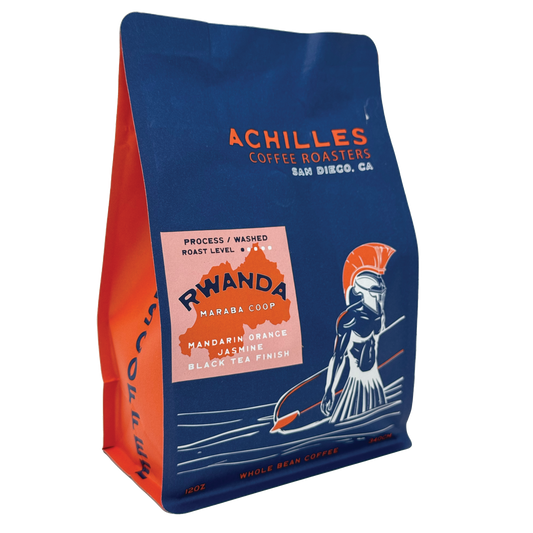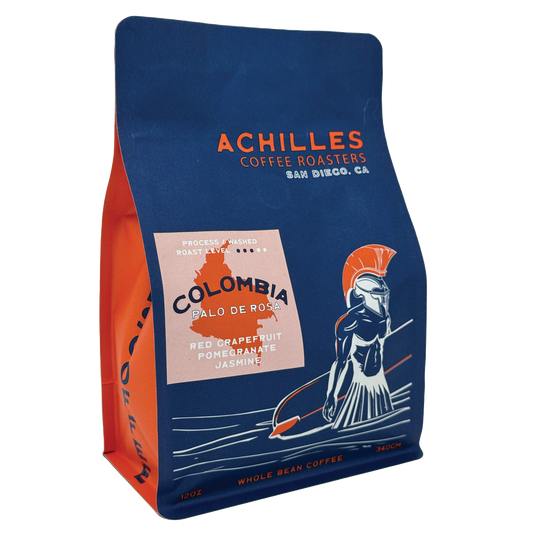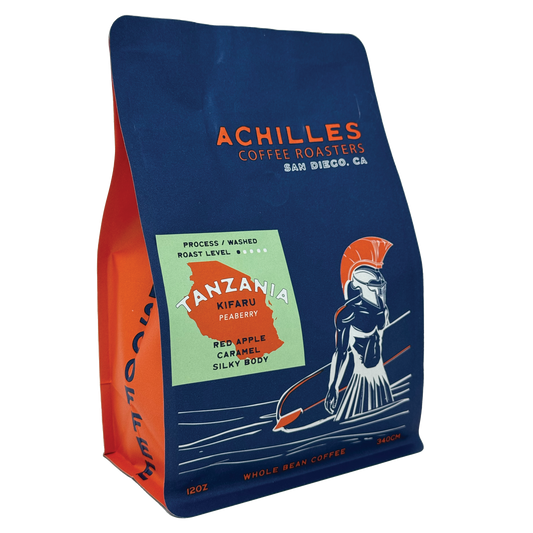Freshly roasted coffee is one of the simplest yet most satisfying pleasures—but preserving that freshness requires more care than most people realize. The moment you open a bag of coffee, several invisible forces begin working against it. Oxygen starts oxidizing delicate aromatic compounds, light accelerates degradation, moisture can be absorbed by the beans, and time steadily dulls their vibrant character.
The result? That bright, aromatic coffee you enjoyed on day one can quickly become flat, stale, and lackluster if it isn’t stored properly. For both casual drinkers and serious coffee enthusiasts, understanding how to protect coffee from these elements is essential. Whether you’re brewing an occasional French press or pulling daily espresso shots, proper storage practices can dramatically extend the life of your beans and preserve the flavors the roaster intended.
In this in-depth guide, we’ll explore exactly how coffee beans lose freshness, examine the science behind staling, highlight the best storage methods, and reveal common mistakes to avoid. You’ll also find expert tips to keep your beans tasting as lively and aromatic as the day they were roasted, so every cup you brew delivers maximum flavor and enjoyment.
Why Freshness Matters
Coffee is a remarkably delicate and highly perishable product. From the moment the beans are roasted, they begin undergoing a series of natural chemical changes that steadily diminish their flavor and aroma. One of the first processes to occur is degassing—the slow release of carbon dioxide (CO₂) that was trapped inside the bean during roasting. While this gas initially protects the beans from rapid oxidation, it eventually escapes, leaving the coffee more vulnerable to air exposure.
At the same time, oxygen in the surrounding air begins reacting with the coffee’s volatile aromatic compounds and natural oils. This oxidation process breaks down the molecules responsible for the coffee’s vibrant flavor, sweetness, and aroma. The result isn’t dangerous to consume—coffee doesn’t “go bad” like milk or meat—but it does become stale. Instead of the bright, layered flavors you expect from freshly roasted coffee, stale beans produce a cup that’s flat, papery, bitter, or generally lifeless, no matter how skilled your brewing technique may be.
Unlike some pantry staples that can sit for months without noticeable changes, coffee’s peak flavor window is relatively short—often just a few weeks after roasting. Factors like roast level, packaging, and storage conditions can affect this timeline, but the key takeaway is clear: freshness directly impacts taste. Understanding and managing the forces that cause staling—oxygen, moisture, light, and time—is the foundation for brewing coffee that consistently tastes exceptional at home.
What Causes Coffee Beans to Go Stale?
Several factors contribute to the degradation of coffee once the bag is opened:
1. Oxygen
Oxidation is the single biggest enemy of coffee freshness, and it begins the moment roasted beans are exposed to air. Coffee is full of volatile aromatic compounds and delicate oils that are responsible for its distinctive flavor, aroma, and complexity. These compounds are highly reactive, and oxygen quickly starts to break them down through chemical reactions that dull and flatten the coffee’s profile.
The result is a gradual but noticeable loss of vibrancy. Over time, bright fruity notes fade, sweetness diminishes, and the cup takes on muted, papery, or even bitter flavors. This process happens faster than many people realize—within days to weeks depending on how the coffee is stored.
This is why airtight containers are absolutely essential for maintaining coffee quality. By minimizing oxygen exposure, you slow down the oxidation process dramatically. Resealable bags with one-way valves offer some protection, but transferring beans into a high-quality airtight canister—especially one with a CO₂ release valve—can extend the coffee’s peak flavor life. For best results, choose containers made from non-porous materials like stainless steel, ceramic, or thick glass, and store them in a cool, dark place away from light and humidity.
2. Light
Ultraviolet (UV) light is another major factor that accelerates the staling of coffee beans. When beans are exposed to light—particularly UV rays—they undergo photo-oxidation, a process that speeds up the chemical breakdown of aromatic compounds and oils inside the bean. This reaction occurs even if the beans are stored in a sealed container, because light penetrates many types of packaging and interacts directly with the compounds responsible for coffee’s flavor and aroma.
Transparent or lightly colored containers may look elegant on a kitchen counter, but they do little to protect against these harmful rays. Over time, exposure to sunlight or even bright indoor lighting can cause beans to lose their brightness and develop stale or “flat” flavors much faster than beans stored in opaque containers.
For optimal freshness, it’s best to keep coffee in dark, opaque canisters or containers made of materials like ceramic, stainless steel, or tinted glass that block UV rays. Storing coffee in a cupboard or pantry away from direct light further minimizes the risk of light-induced degradation. By protecting your beans from UV exposure, you preserve their delicate flavor compounds for a longer period—ensuring each brew tastes as vibrant as possible.
3. Moisture
Coffee beans are hygroscopic, which means they naturally absorb moisture from their environment. This property is one of the reasons proper storage is so important. When beans are exposed to humid air, they begin to take in water vapor, which can have several negative effects on their quality and performance:
First, excess moisture accelerates aging. Humid conditions cause chemical reactions—particularly oxidation—to occur more rapidly, leading to the breakdown of volatile aromatic compounds. This dulls the coffee’s flavor and shortens its shelf life. Beans that have absorbed moisture often lose their brightness and can develop stale, muted, or even musty notes.
Second, moisture affects bean weight and density, which can throw off your brewing ratios. Even slight changes in moisture content can alter how much coffee you’re actually using by weight, which may lead to over- or under-extraction without you realizing it.
Finally, humidity impacts grinding and extraction. When beans absorb water, they become softer and can grind inconsistently, leading to uneven particle sizes. Uneven grinds make it difficult to achieve balanced extraction, often resulting in a mix of bitter and sour flavors in the same cup. High humidity can also cause coffee grounds to clump, particularly in espresso grinders, making dosing and tamping less consistent.
To prevent these issues, it’s best to store coffee in a cool, dry place away from kitchens, dishwashers, or other sources of steam. Airtight containers help reduce moisture exposure, and avoiding the fridge or freezer for everyday storage prevents condensation from forming when beans are repeatedly taken in and out. By keeping humidity in check, you can significantly extend the life and flavor quality of your coffee beans.
4. Heat
Warm environments significantly accelerate the staling process of coffee by speeding up chemical reactions inside the beans. Heat acts as a catalyst for oxidation and the breakdown of volatile aromatic compounds—the very elements responsible for coffee’s vibrant flavors and enticing aromas.
When coffee beans are exposed to elevated temperatures, their natural oils and delicate flavor compounds degrade more quickly, resulting in a dull, flat-tasting cup. You may notice that beans stored in warm spaces lose their brightness, sweetness, and complexity faster than expected, even if they’re in a sealed container.
Placing coffee near stoves, ovens, or sunny windows is particularly problematic. These areas experience fluctuating temperatures, which can cause condensation inside the container and further compromise freshness. Heat combined with light exposure (such as a sunlit countertop) can accelerate the formation of off-flavors, making your coffee taste stale well before its time.
To preserve flavor, always store coffee in a cool, stable environment—ideally between 60–70°F (15–21°C). A dark pantry or cupboard away from heat sources is perfect. By minimizing temperature fluctuations and avoiding warm spots in your kitchen, you can extend the shelf life of your beans and keep their flavors vibrant for longer.
5. Time
Even with excellent storage practices, roasted coffee has a natural shelf life. No matter how airtight your container is or how cool and dark your storage location may be, time will gradually diminish the coffee’s vibrancy. For most specialty coffees, the optimal consumption window is between 3–4 weeks after the roast date. During this period, the beans have typically finished degassing enough to brew well but still retain their peak aroma, sweetness, and complexity.
Beyond this window, flavor degradation happens gradually but inevitably. Aromatic compounds begin to dissipate, natural oils oxidize, and the coffee loses the lively acidity and nuanced flavors that made it special in the first place. While older coffee isn’t unsafe to drink, its cup profile shifts—becoming flatter, less sweet, and more muted. You may notice a papery or stale undertone, especially with lighter roasts that rely on delicate flavor compounds.
Certain roast levels and storage conditions can slightly extend or shorten this timeline. Light roasts often hold onto their brighter notes for a few weeks longer than dark roasts, but they’re also more sensitive to poor storage. Dark roasts, with more surface oils exposed, tend to oxidize faster. Similarly, if beans are opened frequently and exposed to air multiple times a day, their peak window can shrink to just a couple of weeks.
To make the most of your beans:
-
Buy smaller quantities more frequently rather than stocking up in bulk.
-
Note the roast date, not just the “best by” date, and plan your brewing accordingly.
-
If you must store beans long-term, consider airtight, opaque containers and, for extended periods, freezing in airtight portions to pause staling.
By understanding this freshness timeline, you can enjoy your coffee when it’s at its absolute best—capturing the flavors the roaster intended.
Step-by-Step: How to Store Coffee Beans After Opening
1. Keep Coffee in an Airtight Container
After opening the bag, transfer your beans to a high-quality, airtight container. This slows down oxidation and keeps environmental factors out. Look for containers with:
-
A one-way valve to let CO₂ escape without letting oxygen in
-
A tight rubber or silicone seal
-
Non-transparent materials that block UV light (opaque ceramic or stainless steel are excellent options)
2. Store in a Cool, Dark Place
The pantry or a cupboard away from appliances is ideal. Avoid placing containers near ovens, dishwashers, or other heat sources. A stable, room-temperature environment prolongs freshness far better than fluctuating kitchen temperatures.
3. Avoid the Fridge for Daily Use
While refrigeration might seem like a good idea, it’s usually not. Fridges contain moisture and fluctuating humidity, which coffee can absorb, leading to off-flavors. Additionally, opening and closing the container introduces condensation.
The exception: if you have a large quantity of coffee you won’t use for weeks, you can freeze beans in small, airtight portions (see below).
4. Consider Freezing for Long-Term Storage
Freezing is a valid option when done correctly. Here’s how:
-
Divide beans into single-week portions and place them in airtight, freezer-safe bags or containers.
-
Squeeze out as much air as possible before sealing.
-
Store them in the freezer for up to 3 months.
-
When ready to use, let the beans come to room temperature before opening to avoid condensation forming on the surface.
Freezing locks in flavor compounds and slows staling dramatically, but only if moisture exposure is minimized.
5. Keep Beans Whole Until Brewing
Grinding coffee dramatically increases surface area, exposing more of the bean to oxygen and speeding up staling. Always grind just before brewing for the freshest flavor. Pre-ground coffee can lose its peak aroma within hours.
Common Coffee Storage Mistakes to Avoid
Even seasoned coffee drinkers sometimes make storage mistakes that shorten the life of their beans. Here are a few to watch out for:
-
Leaving beans in the original bag without sealing it properly
-
Using decorative glass jars that expose coffee to light and air
-
Storing coffee above the stove or near a window, where temperature fluctuates
-
Keeping coffee in the fridge without airtight packaging
-
Buying in bulk without freezing portions, leading to stale beans by the time you reach the bottom of the bag
Avoiding these pitfalls can dramatically improve the consistency of your brews.
How Long Do Coffee Beans Stay Fresh?
Here’s a general timeline for roasted coffee freshness:
-
0–3 Days After Roast: Too fresh. Coffee is degassing rapidly and may brew unevenly.
-
3–14 Days After Roast: Peak flavor. Aromas are vibrant, and extraction is balanced.
-
2–4 Weeks After Roast: Still good, but flavors begin to soften. Proper storage helps prolong this period.
-
1–3 Months After Roast: Noticeable decline. Coffee may taste flat or lack complexity.
-
3+ Months: Stale. While drinkable, it won’t deliver the quality you expect from freshly roasted beans.
For optimal results, buy only what you’ll drink within 2–4 weeks, and store it properly.
Bonus Tips for Maximum Freshness
Proper storage goes beyond just tossing beans into any container. A few intentional habits can dramatically extend the flavor life of your coffee and keep it tasting vibrant for weeks.
1. Use Vacuum-Sealed Containers
Invest in a vacuum-sealed coffee canister with a hand pump or automatic vacuum feature to remove excess air each time you store your beans. By minimizing oxygen exposure, you significantly slow down the oxidation process that causes staling. Some modern containers even have built-in valves that let you see when the air has been fully evacuated.
2. Label with Roast and Open Dates
Always label your containers with both the roast date and the date you opened the bag. This simple step helps you track freshness and ensures you’re consuming the coffee within its ideal flavor window—usually 3 to 4 weeks after roasting. This is especially useful if you keep multiple coffees in rotation.
3. Minimize Oxygen Exposure
Avoid opening and closing your storage container more than necessary. Every time the lid comes off, fresh oxygen rushes in and accelerates the staling process. Instead, portion out only what you need for the next few days into a smaller jar and keep the rest sealed.
4. Buy Whole Bean Coffee with Clear Roast Dates
Always choose whole bean coffee from reputable roasters who print the exact roast date on their bags—not just vague “best by” dates. This transparency allows you to make informed decisions about when to buy and brew. Whole beans also stay fresher much longer than pre-ground coffee, especially when stored properly.
Final Thoughts: Treat Coffee Like a Fresh Food, Not a Pantry Item
Many people store coffee beans the same way they store flour, sugar, or rice—tucked away in the pantry for weeks or months, assuming it will stay the same. But coffee behaves more like fresh produce than a shelf-stable pantry staple. Its peak flavor window is limited, and how you handle it after opening the bag determines whether your daily brew tastes vibrant and aromatic or flat and stale.
Once roasted, coffee immediately begins a natural process of degassing and oxidation. This means its aromatic oils, sugars, and volatile compounds—which are responsible for the nuanced flavors you love—start breaking down. Without proper storage, this degradation accelerates, and even the best beans will lose their sparkle.
The simplest way to preserve coffee’s freshness is to minimize its exposure to the elements:
-
Use airtight containers to limit oxygen exposure and slow down oxidation.
-
Keep beans away from light, especially direct sunlight, which accelerates staling through UV exposure.
-
Store in a cool, stable environment rather than near heat sources like stoves or ovens.
-
Avoid humidity, since coffee is hygroscopic and can absorb moisture that alters its flavor and affects extraction.
-
Grind only what you need right before brewing, since ground coffee stales dramatically faster than whole beans.
When you follow these steps, you’re not just preserving flavor—you’re honoring the work that farmers, processors, and roasters put into each bean. Whether you’re savoring the floral brightness of a washed Ethiopian pour-over or the chocolatey depth of a Brazilian espresso, proper storage ensures the coffee expresses its true character all the way to the cup.
By treating coffee like the delicate, flavor-rich product it is, you’ll experience more consistent, satisfying brews day after day.








